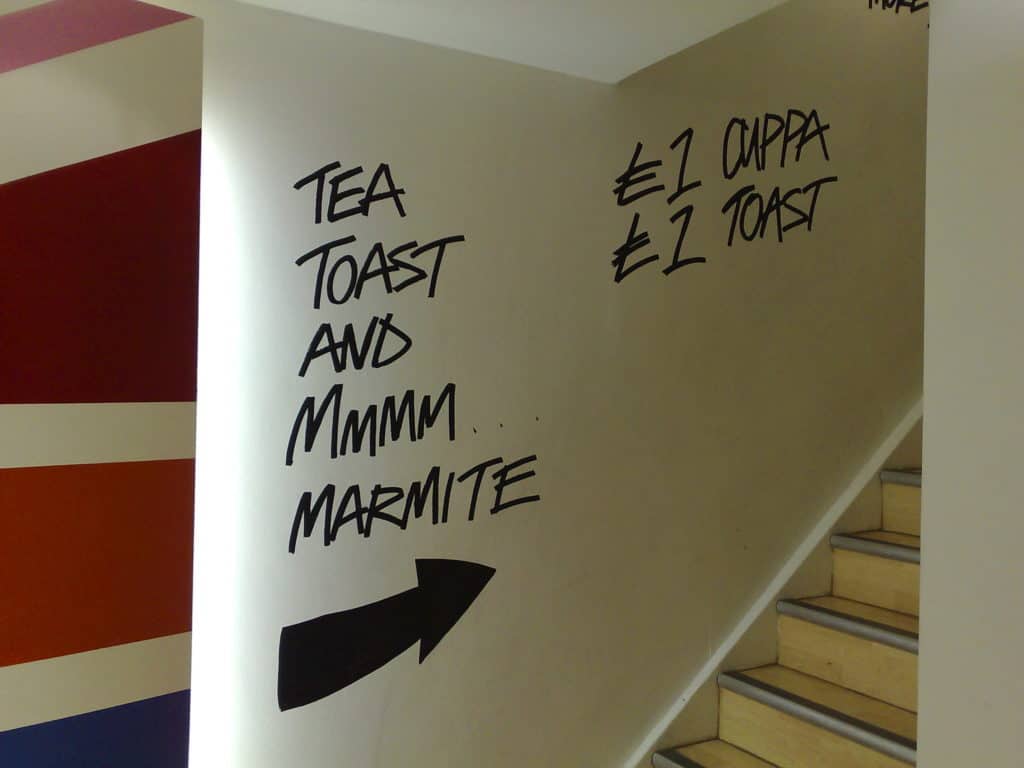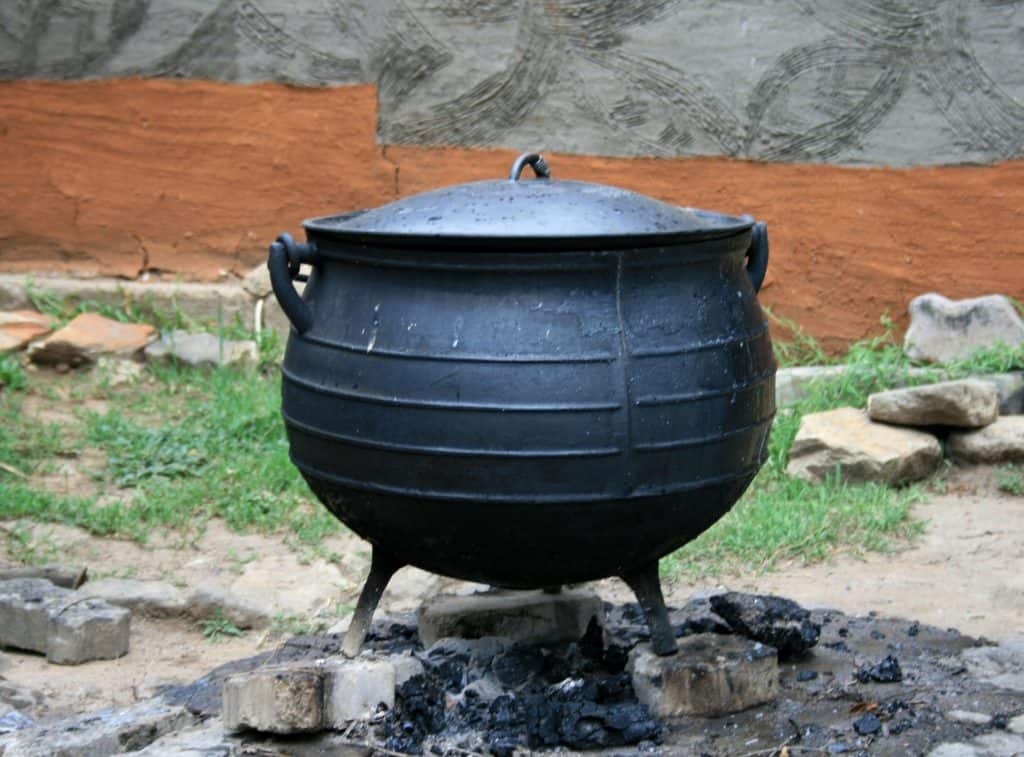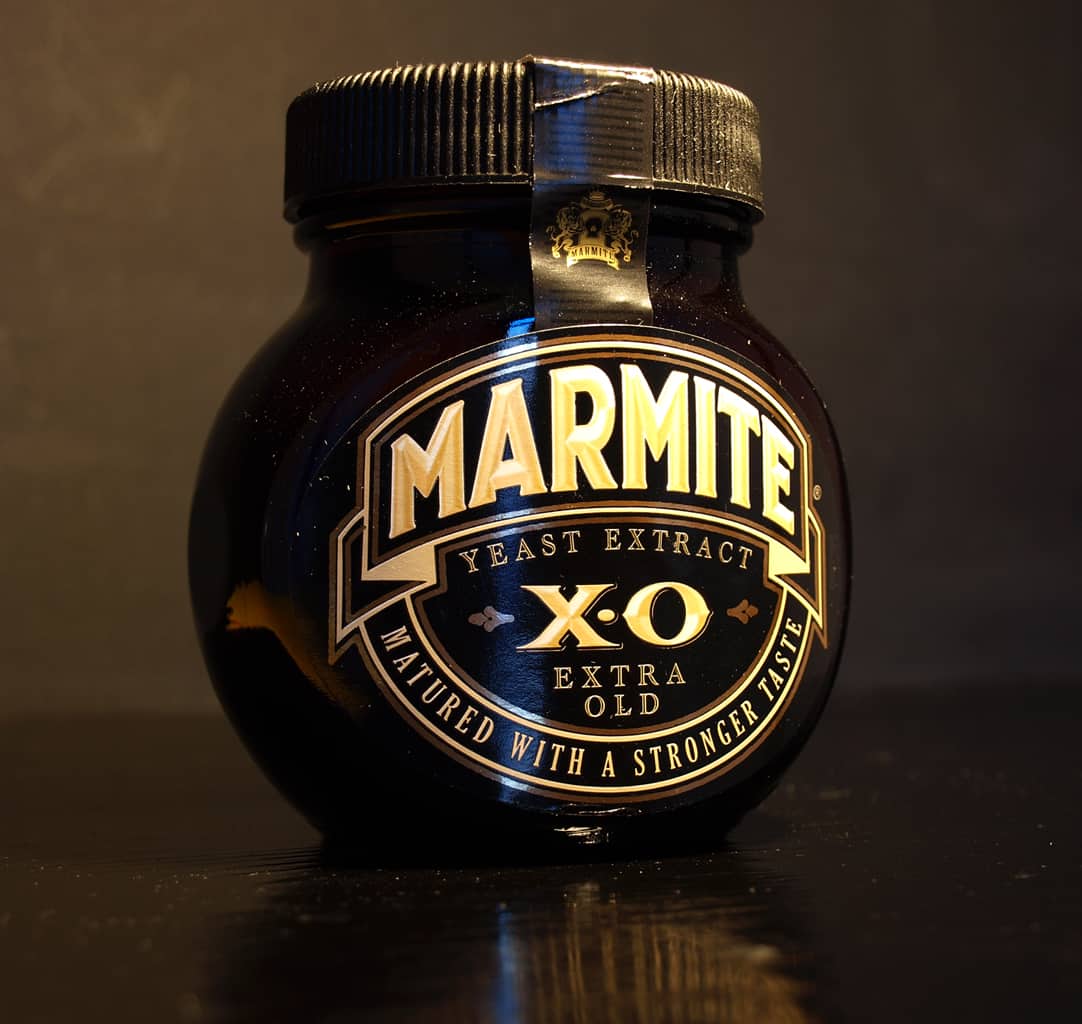To understand British eating, and even British culture, you need to be aware of Marmite. It’s a spread for bread but much more than that. It has entered the language in phrases such as “She’s a Marmite politician” or “this act brings out a Marmite reaction”.
This means some people will love whatever is under discussion. And others will detest and loathe it. It all comes from the Marmite marketing slogan – love it or hate it – which is derived from the fact that some people can’t get enough of the black spread while others will run as far as they can to avoid it.
Marmite is made from yeast extract, effectively what is left at the bottom of barrel after beer has been brewed. It’s been made in Burton-on-Trent, the East Midlands town which is a traditional home of beer. It is now one of the very many Unilever brands.
It is usually found in stores near other spreads such as peanut butter, marmalade, and Nutella. The most common package size is 250 grammes (it costs about £2.80) but single servings, 125 grammes and 500 grammes are normally available but as beer production has been cut in the pandemic, by-products such as yeast extract have become harder to find so it is now difficult to seek out sizes other than 250 grammes. It has an almost indefinite shelf life.

Copyright@Gilda Flickr
Fans will tell you it can do so much more than other substances which you can put on bread or toast. Here are some ideas.
1. Use Marmite to thicken gravies and sauces.
2. Some put a spoonful of Marmite into hot oil before roasting potatoes.
3. It adds a salty tang to meat pies. Or as it is vegan, to vegetable pies.
4. Some spread it over a roasting chicken before cooking. It makes the skin salty and brown.
5. You can mix it into peanut and similar butters – or buy Marmite Peanut Butter ready prepared.
6. It works well with cheese – especially strong flavoured English varieties such as cheddar which can toasted.
7. Or you can just spread it on toast or bread.
Marmite has health properties. Many years ago, the government used to subsidise Marmite for new mothers. The product is a source of Vitamin B including supplemental B12.

Copyright@Gilda Flickr
Some Marmite facts
- Despite the British nature of the spread, the name itself comes from marmite, French for a large earthenware or metal cooking pot. The original Marmite was sold in earthenware pots but since a hundred years ago, glass is the only container.

Image by Lynn Greyling from Pixabay
- Similar products include Vegemite in Australia (not so salty), Cenovit in Brazil and Vitam-R in Germany.
- It has been used to treat malnutrition.
- You can buy Marmite in personalised jars but you have to do the name in ten letters or less!
- There are all sorts of Marmite branded goods – including a tote bag from Anya Hindmarsh for £895
